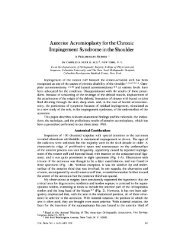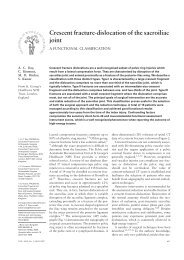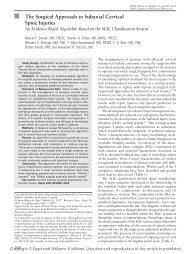Download Residency Training Program PDF - Ross Eye Institute
Download Residency Training Program PDF - Ross Eye Institute
Download Residency Training Program PDF - Ross Eye Institute
Create successful ePaper yourself
Turn your PDF publications into a flip-book with our unique Google optimized e-Paper software.
you are about to do, you should proceed quickly. Don’t give the child too<br />
much time to think about it or negotiate. Try to avoid undue restraint when<br />
instilling drops, unless absolutely necessary. One bad experience at the<br />
eye doctor, and the child may be difficult to examine on all future visits.<br />
Don't forget to explain to the parents that the dilating drops take 30 to 40<br />
minutes to work. Explain to the parents and the older child that he/she<br />
will have blurry vision for up to 8 hours because of the drops, but that the<br />
vision will eventually clear. In some children, the effect may last up to 24<br />
hours, or rarely, longer than a day. Parents and child may wait in the<br />
waiting room, or take a walk during the time that the eyes are dilating.<br />
The charts of those patients who are dilating should be placed in the staff<br />
room, in order according to the time that they will be ready for reexamination.<br />
Do not leave charts in the rooms. Patients get overlooked<br />
when charts get misplaced!<br />
Rapport with Children & Parents. Examining children can be an<br />
enjoyable experience for patient and examiner if approached with a<br />
relaxed, friendly, and confident attitude. There is no need to be<br />
apprehensive, even if you are unsure about your skills. Small children can<br />
often sense an examiner's (or a parent’s) apprehension and become<br />
frightened. Keeping the atmosphere informal works best with most<br />
children. Spend a few moments "making small talk" with the child, as<br />
well as the parent. This puts everyone at ease, and offers an opportunity<br />
for careful, but discreet, observation of the patient's visual behavior.<br />
Approach the tests you must perform as games. Be honest, but gentle with<br />
the patient that is old enough to understand. Never try to trick or deceive<br />
the child. If you lose his trust, it will be next to impossible to get a good<br />
exam that day, or thereafter. When you must do something he won't<br />
enjoy, tell him what you must do, and do it quickly and confidently,<br />
without debate or delay.<br />
Academic Responsibilities. Review the reading schedule provided<br />
below. This list will give you a solid fund of knowledge in the area of<br />
pediatric ophthalmology and strabismus. It is expected that most of this<br />
reading will be completed during your rotation. You should be reading<br />
each night. Remember, this list is a minimum, and knowing the minimum<br />
needed to get through a schedule of patients is not enough. Once the basic<br />
concepts are understood, important articles from the literature should be<br />
read as well. This will help you understand why we do the things the way<br />
that we do. There is a small library of books located in the Staff Room in<br />
the clinic. Additional books and articles are available from Kyle. The<br />
Duane’s Series can be found at the ECMC library. The remainder of the<br />
reading is found in the BCSC, Section 6, Pediatric Ophthalmology and<br />
Strabismus. Other helpful resources include Pediatric Ophthalmology and<br />
27
















